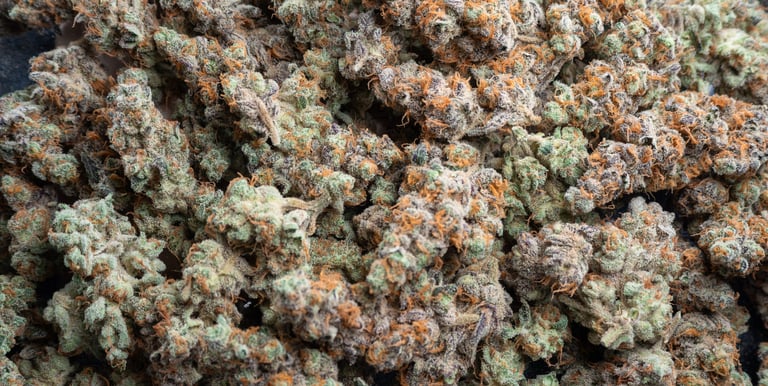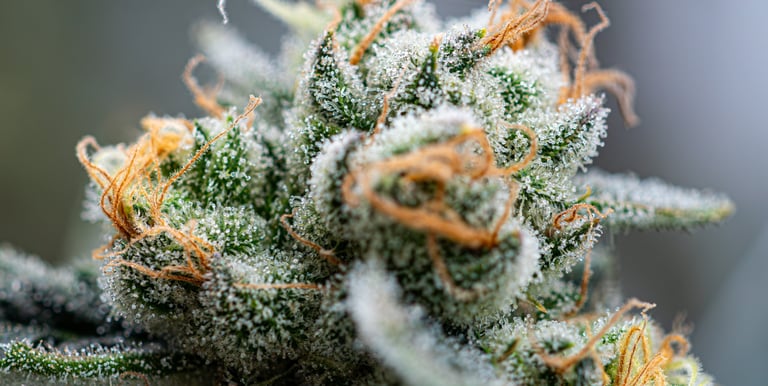
Cannabis Education
Welcome to the education page of Hybrid Theory, where we are dedicated to providing you with valuable insights into the world of cannabis. As a licensed microbusiness, Hybrid Theory not only cultivates high-quality cannabis but also processes and distributes our products with care and precision. Our mission is to educate consumers about the benefits and uses of cannabis, empowering them to make informed choices. Here, you will find a wealth of information, from cultivation practices to the intricacies of processing, all designed to enhance your understanding of our products and the cannabis industry as a whole. Join us on this educational journey and discover the unique world of Hybrid Theory!
New York 2025
Explore unique strains and their genetics, emphasizing terpene profiles for informed cannabis choices.




What Are Terpenes?
Terpenes are organic compounds found in a variety of plants, including cannabis. They are responsible for the distinctive scents and flavors of different cannabis strains, and they play a significant role in the overall experience of consuming cannabis. Beyond their aromatic qualities, terpenes may also provide various therapeutic benefits and influence the effects of cannabinoids.
Common Terpenes in Cannabis
Myrcene:
Aroma: Earthy, musky, and herbal.
Potential Effects: Known for its relaxing properties, myrcene may help with anxiety and insomnia.
Limonene:
Aroma: Citrusy and bright.
Potential Effects: Often associated with mood enhancement and stress relief, limonene may also have anti-inflammatory properties.
Pinene:
Aroma: Pine-like and fresh.
Potential Effects: This terpene is believed to promote alertness and memory retention, and it may also have anti-inflammatory benefits.
Caryophyllene:
Aroma: Spicy and peppery.
Potential Effects: Unique for its ability to interact with cannabinoid receptors, caryophyllene may help relieve pain and inflammation.
Linalool:
Aroma: Floral and herbal.
Potential Effects: Known for its calming effects, linalool may aid in reducing anxiety and promoting relaxation.
The Entourage Effect
One of the most exciting aspects of terpenes is their role in the "entourage effect." This theory suggests that cannabinoids and terpenes work synergistically to enhance each other’s effects. As a result, the combination of different compounds in a cannabis strain may lead to more nuanced experiences, making it essential to consider both cannabinoids and terpenes when selecting a product.
Why Terpenes Matter for New York Consumers
Understanding terpenes can empower you to choose cannabis products that align with your desired effects. Whether you seek relaxation, creativity, or relief from discomfort, the terpene profile of a strain can significantly influence your experience.
Discovering Terpene Profiles
At Hybrid Theory, we prioritize transparency and education. You can explore our product offerings to find detailed terpene profiles for each strain. This knowledge will guide you in selecting the right products to suit your preferences and needs.
What Are Cannabinoids?
At Hybrid Theory, we believe in empowering our consumers through education. Cannabinoids are a fascinating class of chemical compounds that play a crucial role in the effects and benefits of cannabis. Found primarily in the cannabis plant, cannabinoids interact with the body’s endocannabinoid system, which is responsible for regulating various physiological processes such as mood, pain, appetite, and memory.
Types of Cannabinoids
Phytocannabinoids
These naturally occurring cannabinoids are derived from the cannabis plant. Some of the most well-known phytocannabinoids include:Tetrahydrocannabinol (THC): The most recognized cannabinoid, THC is known for its psychoactive effects, delivering the characteristic "high" associated with cannabis. It is also celebrated for its therapeutic properties, which may aid in pain relief, appetite stimulation, and nausea reduction.
Cannabidiol (CBD): A non-psychoactive compound known for its remarkable therapeutic potential, CBD is sought after for its ability to reduce anxiety, ease inflammation, and help manage seizures, all without inducing a high.
Cannabigerol (CBG): Often referred to as the "mother" cannabinoid, CBG is also non-psychoactive and is believed to have anti-inflammatory and neuroprotective benefits.
Endocannabinoids
These naturally produced compounds exist within the human body and help maintain homeostasis by binding to cannabinoid receptors.Synthetic Cannabinoids
These are laboratory-created compounds that mimic the effects of natural cannabinoids. While some serve medical purposes, others can be unpredictable and potentially harmful.
The Role of Cannabinoid Receptors
Cannabinoids exert their effects primarily by binding to CB1 and CB2 receptors, which influence pain, mood, and various physiological responses. The "entourage effect" emphasizes how cannabinoids and other compounds work together to amplify each other's effects, meaning that the specific profiles of our products can lead to tailored experiences.
As a small batch microbusiness in New York, Hybrid Theory ensures high-quality products from seed to sale. Follow us on Instagram and X for daily posts and updates about our offerings and cannabis education!

Contact Us
Get in touch to learn about our unique cannabis strains.
